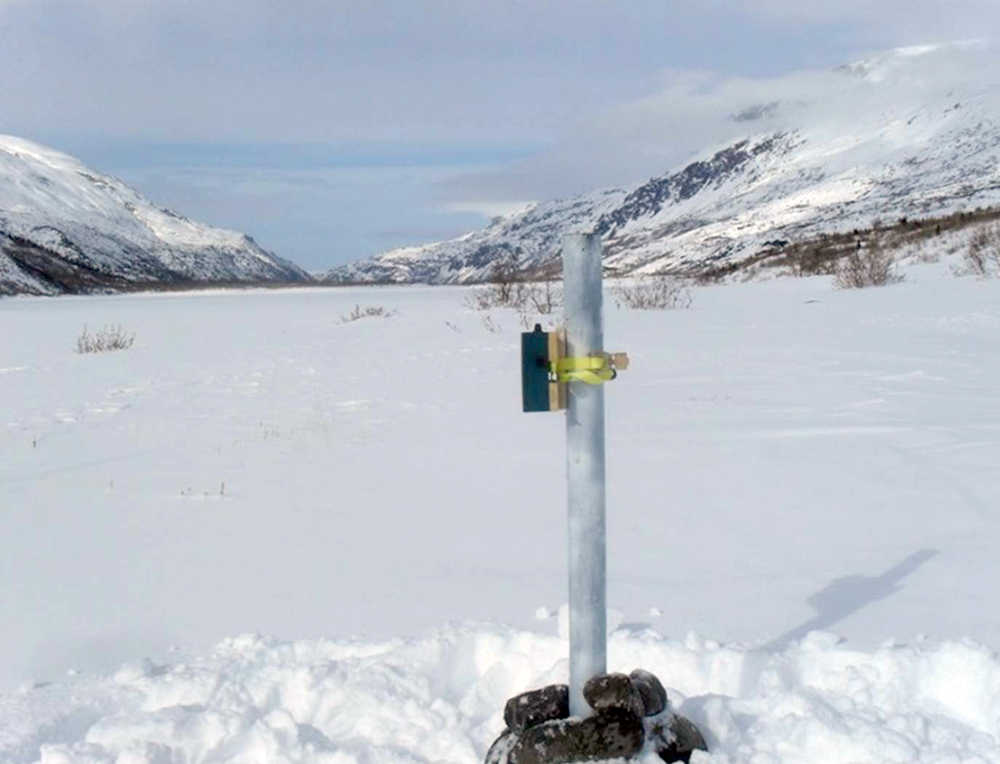Winter is coming. That is probably one of my favorite phrases from the Game of Thrones’ character, Eddard Stark, Lord of Winterfell. As Alaskans, I am sure that the same phrase reverberates from our lips every September. Most of us look forward to winter.
I grew up in Ohio so snow is nothing new for me. But as I got older and less inclined to build snowmen and battle it out with friends in snowball fights, winter became less tolerable.
So what am I doing here? Well, life takes many turns and I chose to pursue a Ph.D. in wildlife biology at the University of Alaska Fairbanks. My doctoral research addresses concerns over the possible effects snowmobile activity, and the noise it generates, have on wildlife, plants and wilderness on the Kenai National Wildlife Refuge. It seems ironic that for all these years I tried getting away from snow and cold, I ended up in the snowiest and coldest state.
I spent many hours collecting data in both near and remote regions of the Refuge, definitely on some of the coldest days of the year. Field work in such conditions isn’t easy but one focal piece of my research, namely sound, gave me an entirely new perspective on winter and, indeed, on nature.
Winter is a season of low biological activity. Most birds migrate south and many resident animals become dormant or hibernate. Human activity also declines in winter and contrasts sharply with the hustle and bustle of mid-summer. There are also changes in geophysical events — rain becomes snow and rivers become frozen.
These environmental changes greatly alter the soundscape. Soundscape ecologists use the terms biophony, anthrophony, and geophony to describe the biological, anthropogenic (human), and geophysical sounds of the landscape.
Winter’s soundscape is seasonally unique. As a musician you could describe the spring and summer soundscape as the forte of the seasons while winter would be the piano. During winter 2011-2012, I recorded and subsequently listened to (with the help of some very patient interns) 60,000 sound recordings from 62 locations throughout the Refuge.
While I did identify many sounds, I also recorded long time periods and many areas of the Refuge that had no sound, not even wind — the complete absence of biophony, anthrophony, and geophony. In other words, silence. But not true silence; not the silence created in a sound chamber. It was the silence of nature.
This was a very interesting discovery! Among my fellow soundscape ecologists, who study and record soundscapes during spring, summer and fall, or in tropical areas where sound is so prevalent species have developed acoustic niches to hear one another, my findings were the first to be documented.
Natural silence is likely unique to northern latitudes and winter especially. The ecological significance of silence is not yet known. I like to think of natural silence as the canvas upon which other sounds are painted.
Silence could mean many things. It could indicate the absence of habitat qualities conducive to life. This seems partially the case considering I found that Tustumena and Skilak Lakes were large hotspots for natural silence.
Natural silence could also indicate dormant niches. After all, many of the vocal species that occur during summer do not stay over winter. This leaves vacancies in the ecosystem that remain dormant throughout winter when resources are no longer present or inaccessible. But as spring returns, so do vocalizing birds, insects, or wood frogs that fill the acoustic space.
Natural silence could also represent a time period when risks to wildlife are reduced. Silence is in the ear of the beholder. We already know that some species communicate on subsonic and supersonic frequencies beyond the threshold of human hearing, but animals also have hearing thresholds. Not every species hears at the same frequency (pitch) and, like humans, the ability of one species to experience silence is not the same as another. It seems probable that the spectrum of sound perceived by an organism as silence may provide acoustic information that says “All is calm; there is nothing to worry about.”
Natural silence also plays a special role in human perception and experience. In a spiritual sense, silence can be a means of respecting religious settings, meditation, and prayer. Silence is known to physiologically initiate a relaxed state of mind. Silence is often associated with respect for the dead and is generally expected during funerals. Silence is also known to psychologically activate certain human behaviors in public buildings such as libraries, churches, and temples. The human experience alone may be significant enough to qualify the importance of silence in nature.
All these likelihoods could be considered mere speculation, but scientists like to call them new hypotheses to test. The best thing about science is that one discovery always leads to new questions and new discoveries.
If you’re fortunate enough to travel in the Kenai backcountry this winter, stop for a moment and listen.
Perhaps you’ll hear nothing — yet another unique Alaskan experience you may not have fully appreciated.
Tim Mullet is in the Pathways program at the Kenai National Wildlife Refuge. He is also adjunct faculty at the Kenai Peninsula College. You can find more information about the Refuge at http://kenai.fws.gov or http://www.facebook.com/kenainationalwildliferefuge.

